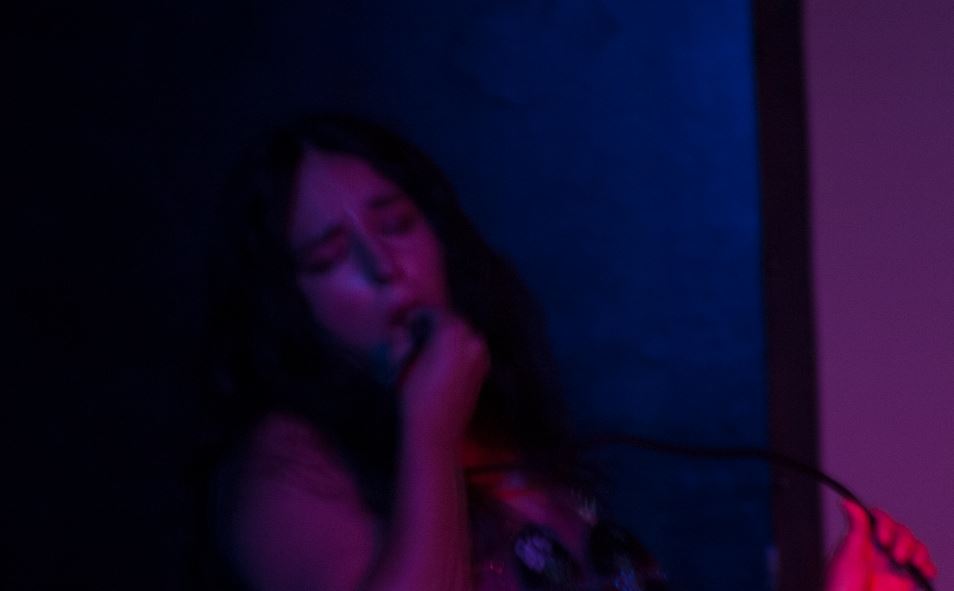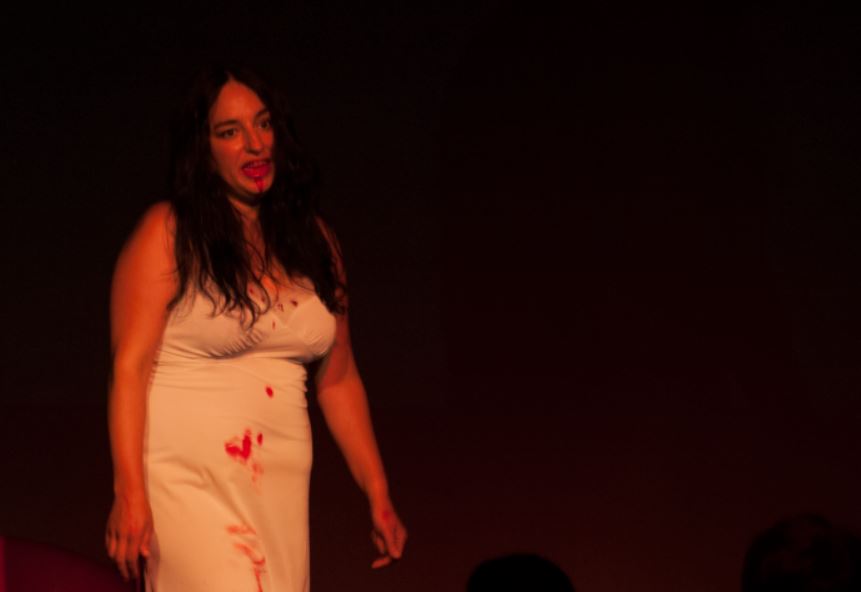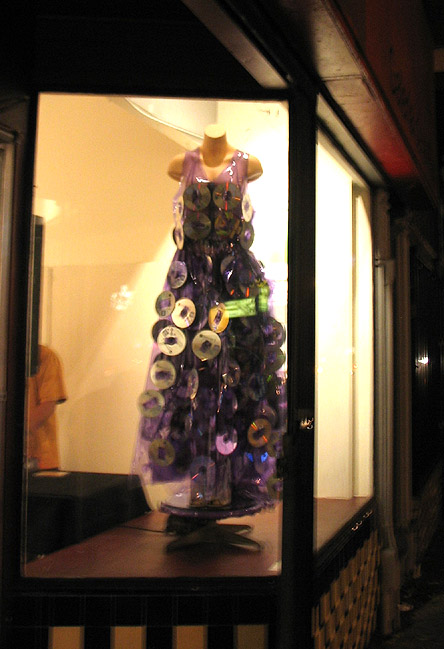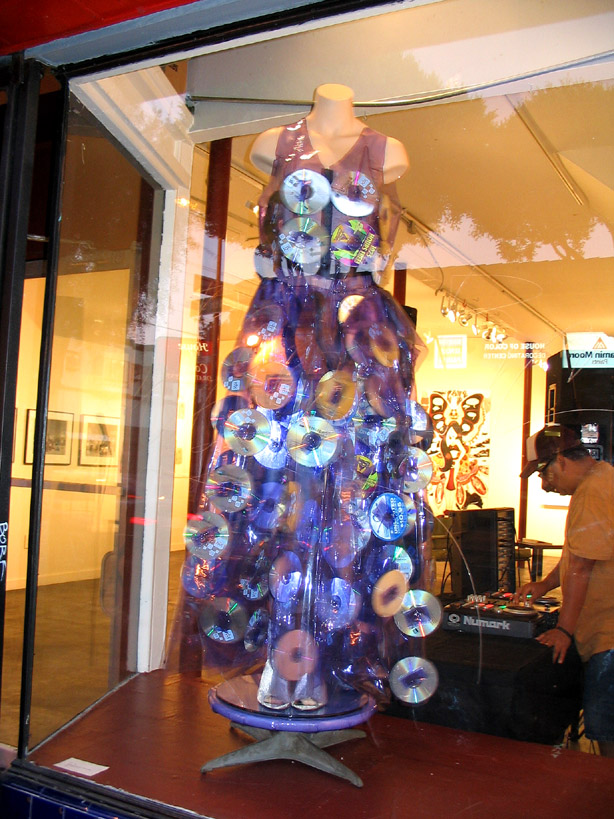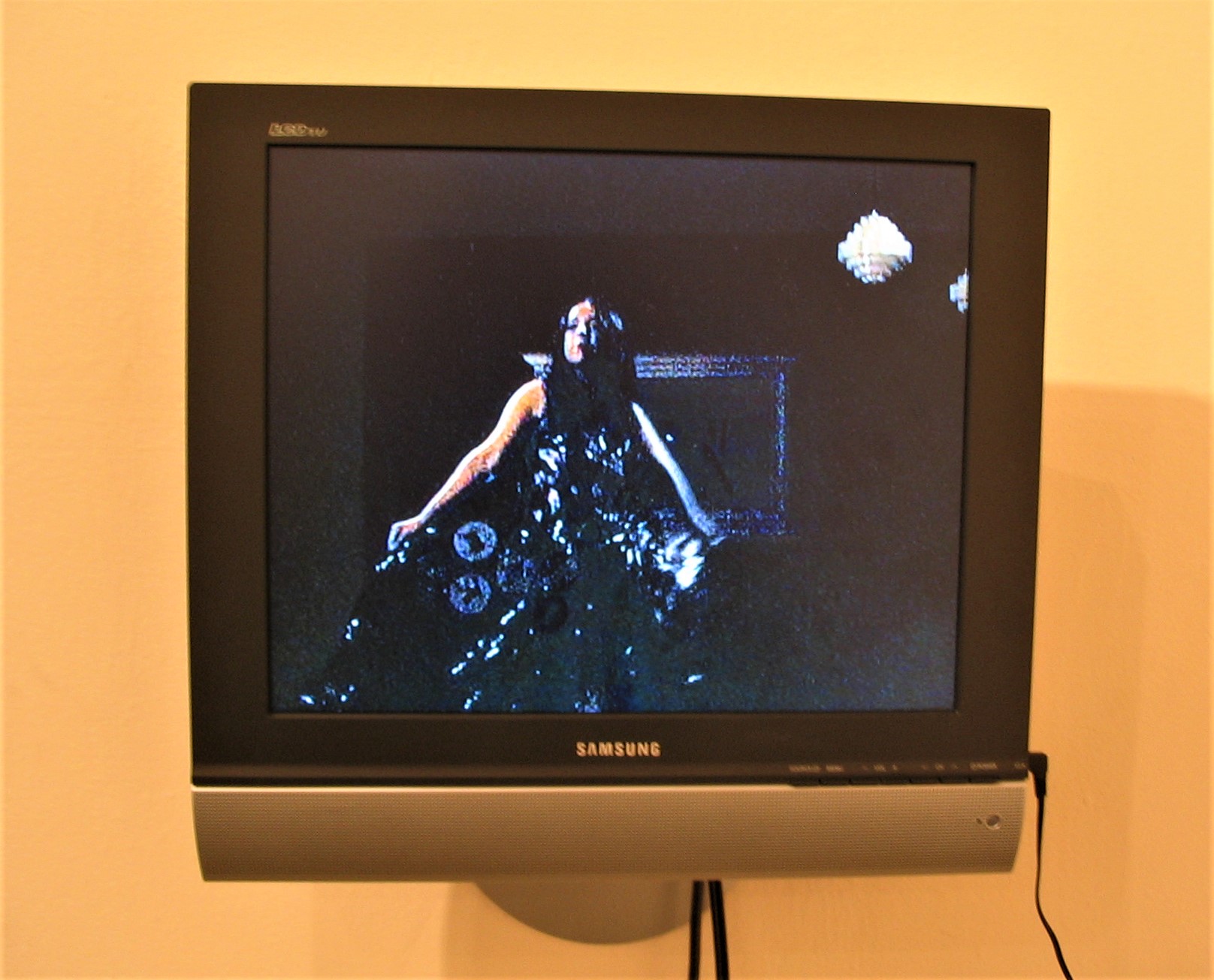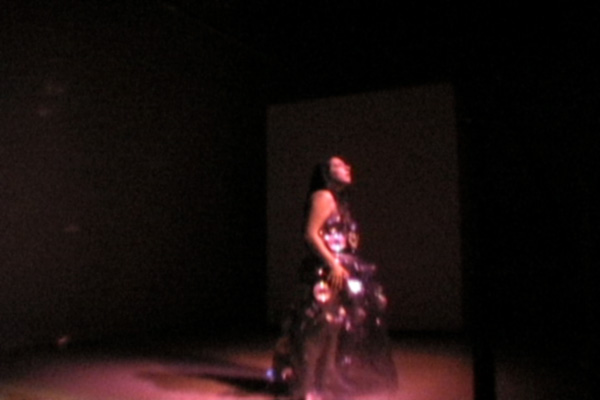Computers Are A Girl's Best Friend
Computers Are A Girl’s Best Friend (2004-2009) was a multi-media project that appropriated the song Diamonds Are A Girl's Best Friend from the 1953 musical Gentlemen Prefer Blondes to tour the damages of computers on women's bodies. The project linked the horrific exploitation at the heart of diamond mining with the horrific and destructive effects on women's bodies of the exportation of toxic hazardous electronic waste to Asia, the rapid increase of trafficking of women for sexual exploitation because of new online channels, the penetration of web order brides, and other extraordinary die-products of the computer revolution.
Singing the glories of computers, the glamorous 'Digital Diva' was interrupted by video montages and audio of interviews with activist Sheila Davis (Executive Director of the Silicon Valley Toxics Coalition's Clean Computing Campaign); scholar Anne Balsamo (author of Technologies of the Gendered Body, Duke) and critic Paulina Borsook (author of Cyberselfish/A Critical Romp through the Terribly Libertarian Culture of High-Tech" Public Affairs, 2000). The song Computers Are A Girl's Best Friend was created with the help of musician Martin Franco, who made the sound track by ear reading the original Diamonds Are A Girl's Best Friend and laying down all the different tracks on a synthesizer. Generous funding for this project was provided by the Puffin Foundation.
Out of this research creation project, I made a series of digital prints titled Cyber.Labia (I used the term labia in the sense of dar labia - to talk) on e-waste, e-work, porn, and Internet geography. Some of the images from the series depict what have become very routine views of women from online pornographic web sites superimposed on maps of the geography of Internet use. Implicit to this overlay is a reflection on flows - the most violent pornography and sex work was made or done in the 'Third World,' the Internet traffic and sex tourists were coming from the 'First World,' the hazardous waste flowed 'First World' to 'Third World.' Other collages showed images of manufacturing and overseas recycling - women and children dismantling hazardous e-waste - and workers of the e-revolution being poisoned - onto abstracted maps of internet usage. This series was exhibited at the Bioneers Conference in San Rafael, in Fronteras Electronicas at MACLA for the ISEA/ZERO ONE Festival in San Jose, and at other locations. I also created a chapbook, generously edited by Moira Roth, titled Cyber.Labia: Gendered Thoughts and Conversations on Cyberspace.
Computers are a girl's best friend v.2 AT THE ISEA/Zero One Festival. MACLA, San Jose, 2006.
In 2006, ISEA and ZERO ONE Festival were joined in San Jose. I created a new version of the performance, in 4 parts. Beginning with the song Computer's Are A Girl's Best Friend, then taking apart computers while a very distorted version of the video played behind me, then penetrating myself with computer parts and accessories then sharing stories of trafficking online.
WHAT'S NOT TO LOVE?: Chicano / Latino Whimsy, Parody, Satire and Humor exhibition at Galería de la Raza, San Francisco. 2005
Performance costume and music video I created for Computers Are A Girl's Best Friend exhibited at Galeria de la Raza. The costume was made from the dozens of CD Roms mailed to me by AOL and Netscape, which at the time flooded people's mailboxes with waste. For this exhibition, I constructed a base for the costume that rotated 360 degrees when plugged in, with the help of the magical Tinkerer's Workshop in Berkeley. Galeria de la Raza placed the rotating costume in the window, so it was lit and visible when the gallery was open or closed.
Eco-Visions: WEAD at Thoreau, Thoreau Center for Sustainability, San Francisco. 2005.
Digital Prints from the Cyber.Labia series and CD ROM performance costume I created for Computers Are A Girl's Best Friend.
TECHNUTOPIA MALFUNCTION AT THE LAB GALLERY, SAN FRANCISCO, 2004.
Rene Garcia and I presented our work together over two weekends at the LAB Gallery. I presented v.1 of the performance, which I premiered at Studio XX in Montreal and also presented at SUNY Albany. Scholar Janell Hobson, who invited me to present at SUNY Albany, wrote about this version of the performance in Bodies As Evidence: Mediating Race, Globalizing Gender (SUNY Press, 2013).
Cyber.Labia: Gendered Thoughts and Conversations on Cyberspace. 2005
This chapbook, generously edited by Moira Roth, went into more detail on elements of cyber exploitation, on the performance, and included a DVD of the music video of the performance. I sent this chapbook out to numerous cyber feminists, sold numerous physical copies, and it is available as a PDF here.







